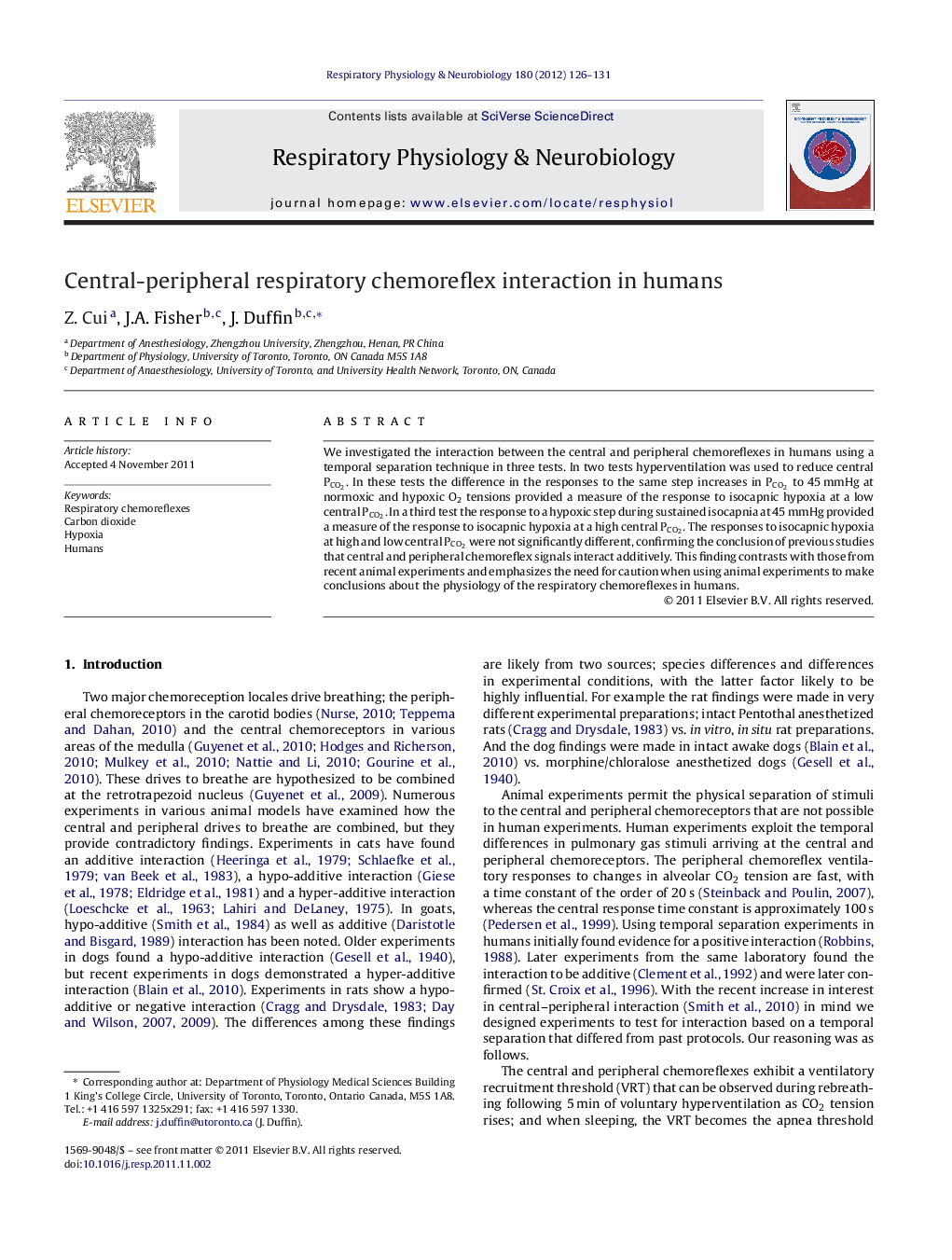| Article ID | Journal | Published Year | Pages | File Type |
|---|---|---|---|---|
| 2847406 | Respiratory Physiology & Neurobiology | 2012 | 6 Pages |
We investigated the interaction between the central and peripheral chemoreflexes in humans using a temporal separation technique in three tests. In two tests hyperventilation was used to reduce central PCO2PCO2. In these tests the difference in the responses to the same step increases in PCO2PCO2 to 45 mmHg at normoxic and hypoxic O2 tensions provided a measure of the response to isocapnic hypoxia at a low central PCO2PCO2. In a third test the response to a hypoxic step during sustained isocapnia at 45 mmHg provided a measure of the response to isocapnic hypoxia at a high central PCO2PCO2. The responses to isocapnic hypoxia at high and low central PCO2PCO2 were not significantly different, confirming the conclusion of previous studies that central and peripheral chemoreflex signals interact additively. This finding contrasts with those from recent animal experiments and emphasizes the need for caution when using animal experiments to make conclusions about the physiology of the respiratory chemoreflexes in humans.
► Responses to isocapnic hypoxia for ventilation, cerebral blood flow, blood pressure and heart rate were observed at different central CO2 tensions. ► Central and peripheral respiratory chemoreceptor signals combine additively to control breathing.
